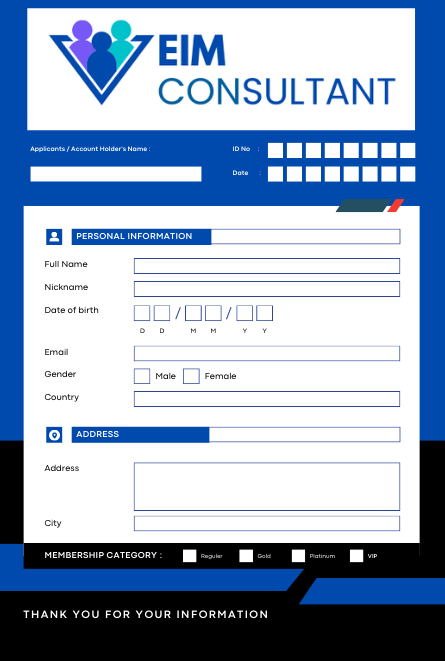(But is woefully ill prepared for)
Cybersecurity breaches are a growing threat to organizations of all sizes, and in recent years, they’ve commanded an exponential surge – along with eliciting skyrocketing costs.
Cyber-abuse is a frightening trend, one which, due to a variety of factors, perpetually escalates in both frequency and severity. On one hand, cyberattacks are increasingly more sophisticated, with attackers using progressively more advanced techniques – including unconventional approaches to, and avant-garde variations of, ransomware and phishing – in order to exploit vulnerabilities in organizational systems. On the other hand, the expanding interconnectivity of organizations has created an upsurge in points of vulnerability, enticing intruders with increasingly extensive caches of information and data – along with greater financial rewards for their acquisition. As more and more organizations compound their content and tether their systems, their vulnerabilities intensify – and their allure as prey amplifies.
Escalation:
For a moment, let’s consider the rise of internet-capable devices available for consumer, residential use. In 2000, most households had a single PC, perhaps with at most an additional laptop for professional necessities. By 2005, each member of a household might have had their own computer, and by the early 2010s a smartphone to accompany it. Today, nearly every electronic device available to consumers has a ‘smart’ network-ready analogue – Smart TVs, fridges, AC units, bulbs, speakers, toothbrushes, vacuums, outlets… The list is endless. Your car can connect to your household. Your pacemaker regularly sends notifications to your primary physician. Lists showing MAC addresses connected to household routers or Bluetooth devices paired with personal phones have become endless and daunting to navigate as the years pile on. And while we can go on for days dissecting the ways in which these devices have changed our lives for the better, we likewise cannot ignore the sheer volume of vulnerable points we have opened and subsequently left exposed – through a combination of arrogant negligence, willful ignorance, and sincere obliviousness – along with the unmitigated extent of personal information someone would have access to were they to exploit these points.
This idea isn’t merely anecdotal. The surging potential of digital fallout is a direct consequence to the growing technologies it accompanies – not a bug, but a feature. Moore’s law predicted the growth of microprocessors at an exponential rate, but neglected to mention the increasingly diverse array of issues that would shadow this trend – the novel crimes this technology would generate, the abuses it would permit, the liabilities it would expose, the political tensions it would harbor… It should come as no surprise, then, that hard data substantiates such analogous escalation of cyber-abuse and, more frighteningly, upholds its continual rise at a comparably exponential rate as statistically inescapable. By 2022, the average cost of a corporate data breach hit $4.45 million (IMB’s 2023 Data Breach Cost Report), with the total cost of all data breaches estimated to have exceeded $6 trillion. More concerningly, the number of records exposed in these breaches has increased dramatically – from 265 million in 2013 to a staggering 22 billion in 2022.
Disaster is impending – a question of when, not if. It is because of this that we cannot afford to resign our cybersecurity measures to a passive existence in the bowels of our systems; we must engage them with the full attention they necessitate. Cybersecurity is a habitually outdated bomb shelter, the log cabin where we duck and cover from pending nuclear winter, and the arms-race for tactical advancements is accelerating by the minute.
Exploitation:
Ransomware attacks have become increasingly common in recent years, and the value of the financial rewards they’ve generated has mirrored this rise – in 2021 alone, ransomware attacks generated an estimated $6.9 billion in revenue for cybercriminals. Ransomware organizations are highly sophisticated and well-organized, constantly evolving their techniques to meet the demands of modern cybersecurity solutions. Targeted organizations might be immediately overwhelmed with the massive financial impacts from their offset, and often struggle to recognize the longer-term devastation that these attacks can inflict on their reputations – a liability which, of course, can further exacerbate financial impacts.
From a cybersecurity perspective, when we discuss the abuse of technology within the scope of our modern, interconnected landscape, our concerns naturally gravitate towards those unknown threats – faceless villains menacing us from beyond by attempting to infiltrate our (presumably) secured digital spheres. In reality, we tend to aggrandize this cliché, often to the point that we neglect to account for the larger human element enabling these attacks. Social engineering attacks, ranging from simple phishing emails to physically-present impostors with fraudulent credentials, are tactically predicated on human error, and are successful precisely because attackers make a point to familiarize themselves with targeted organizations in order to identify potential points of vulnerability within their human operations. And no one, of course, is more primed to dip their feet into social engineering then employees or members of your own organization.
Interwoven into the fabric of modern anxieties riddling enterprise level organizations, insider threats – that is, those posed by vetted employees aiming to misuse their own access to organizational systems – are often the most neglected – and therefore, dangerous – precisely because of our presumption of high confidence in the source, and concerningly, these are often the most successful in terms of what they might achieve. Thankfully, with Guardian for Content Server or eDocs, these fears can be allayed. Using predictive analytics, Guardian monitors employees’ usage in real-time for any suspicious activities, notifying administers as the situation develops and even remotely disabling users’ access if specified thresholds are met – and crucially, before any real damage has been done.
Proliferation, Projections and Inevitabilities:
As organizations occupy an increasingly digital space, amplifying their reliance on available technologies and synergizing every possible branch of their operation, their vulnerabilities become exponentially – and alarmingly – more visible.
Naturally, the proliferation of cybersecurity breaches will continue to flourish proportionately. As will the ever-growing value of personal and corporate data. Twenty years ago, corporate IP could span several servers. Today, billions of dollars in cryptocurrency can be cached on a thumb drive. The harmonious surge of these metrics is not a coincidence: it is an inevitable synergy, a widening battle scar carved from our progress as a technologically advancing civilization.
Mathematical projections from available data support this concern. In 2022, the average cost of a corporate data breach $4.45 million; experts predict that this number will surpass $7 million by 2030. According to IBM’s 2023 Data Breach Cost Report, 3,244 corporate data breaches were reported worldwide in 2022; this number is expected to grow to 4,110 by 2026. The average number of compromised records per breach in 2022 was 25,500; by 2026, its forecast to hit 37,000.
Your castle is growing, but so is the number of wolves howling at the gate. It might be time to expand your moat.
A Sensible Approach to Protection
Let’s take a deep breath. We’re not here to stand on a soap box and preach about the end times, but while you don’t need to fall into a full-blown panic attack, you should be, at the very least, alarmed. If nothing else, these numbers and trends highlight the indisputable necessity for proper protection. Organizations of all sizes urgently (and routinely) need to assess their cybersecurity measures to ensure that they are robust, up for the challenges of the modern era and, perhaps most importantly, capable of proactively keeping pace with new cybersecurity demands as they arise and evolve.
There are a number of things that organizations can do to improve their cybersecurity posture. Implementing strong security controls, training employees on cybersecurity best practices, and conducting regular security assessments are all good places to start. Enhance your security protocols through redundancy, and end negligent practices which enable oversights in simple procedures, establishing routines to ensure the most fundamental chores are observed, such as regularly updating software with the latest security patches. A lack of investment in cybersecurity solutions might be the worst decision an organization can make.
As far as we can tell, when it comes to security measures shielding from insiders, phishers, or other legitimate credential holders looking to abuse their vetted access, Guardian is not just the best solution, it’s the only solution. Unlike other security suites which scan for unwelcome programs or processes, like malware or spyware, Guardian monitors individual users’ activities themselves for suspicious patterns of behavior, and uses its predictive analytics engine to determine when thresholds specified for these suspicious behaviors have been crossed, reacting in real time to avert any damage and stop the offender in their tracks. We sincerely wish that other cybersecurity solutions took this threat as seriously as we do, but as long as were still the only players in the game, we’re more than happy to brag about it.
—-
Ultimately, implementing a set of comprehensive, methodical, and formidable cybersecurity protocols and solutions offers organizations a substantially better outlook at mitigating the risks of data breaches and protecting their sensitive data, extending the life expectancy of their increasingly connected operations in the face of the rapidly escalating digital anarchy ravaging our modern corporate landscape.
If you are interested in learning more about Guardian for Content Server or eDocs, or you know someone at your organization who might be interested in learning more, visit us at www.wertheimglobalsolutions.com or email us any time at sales@wertheimglobal.com.


